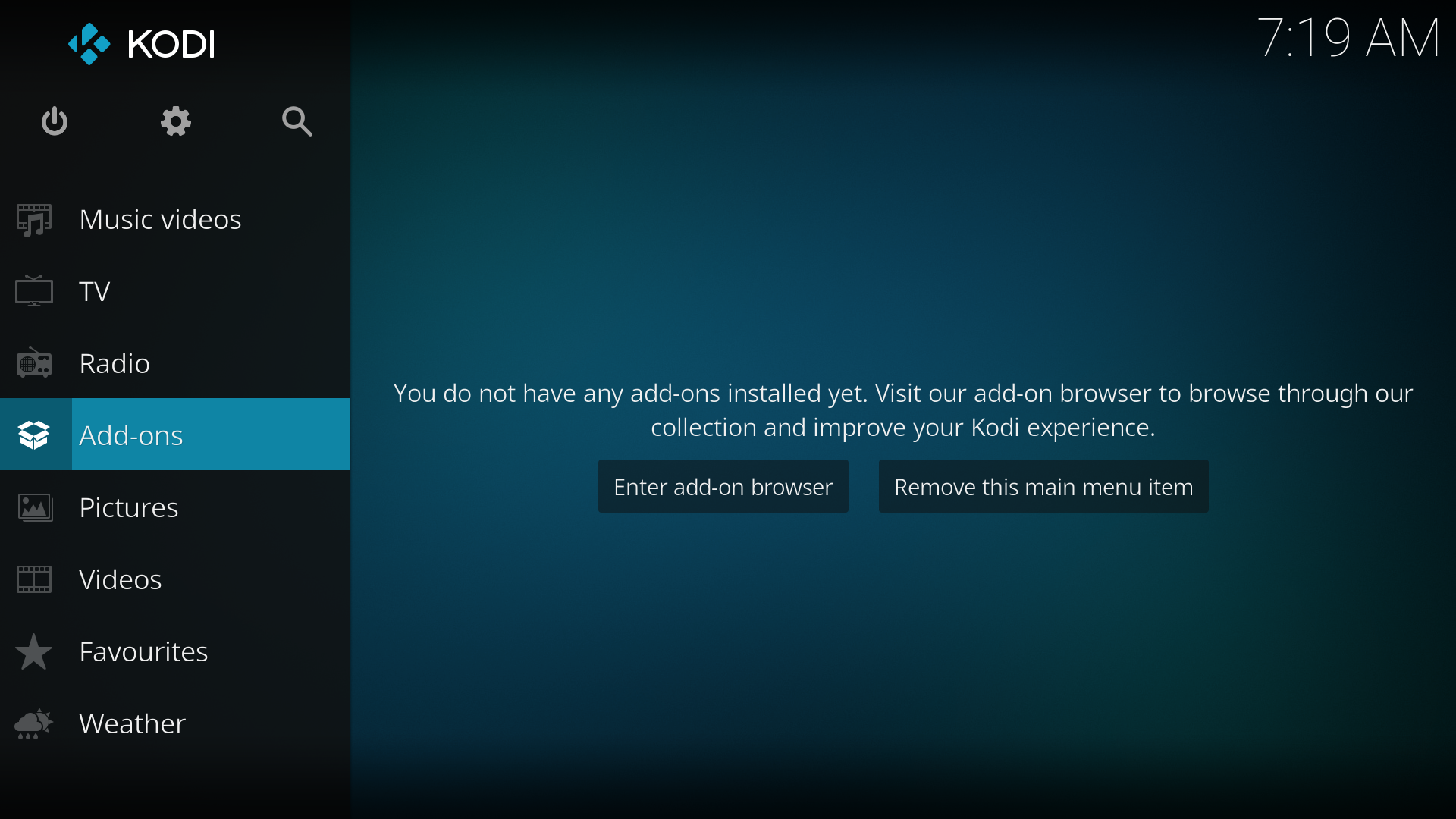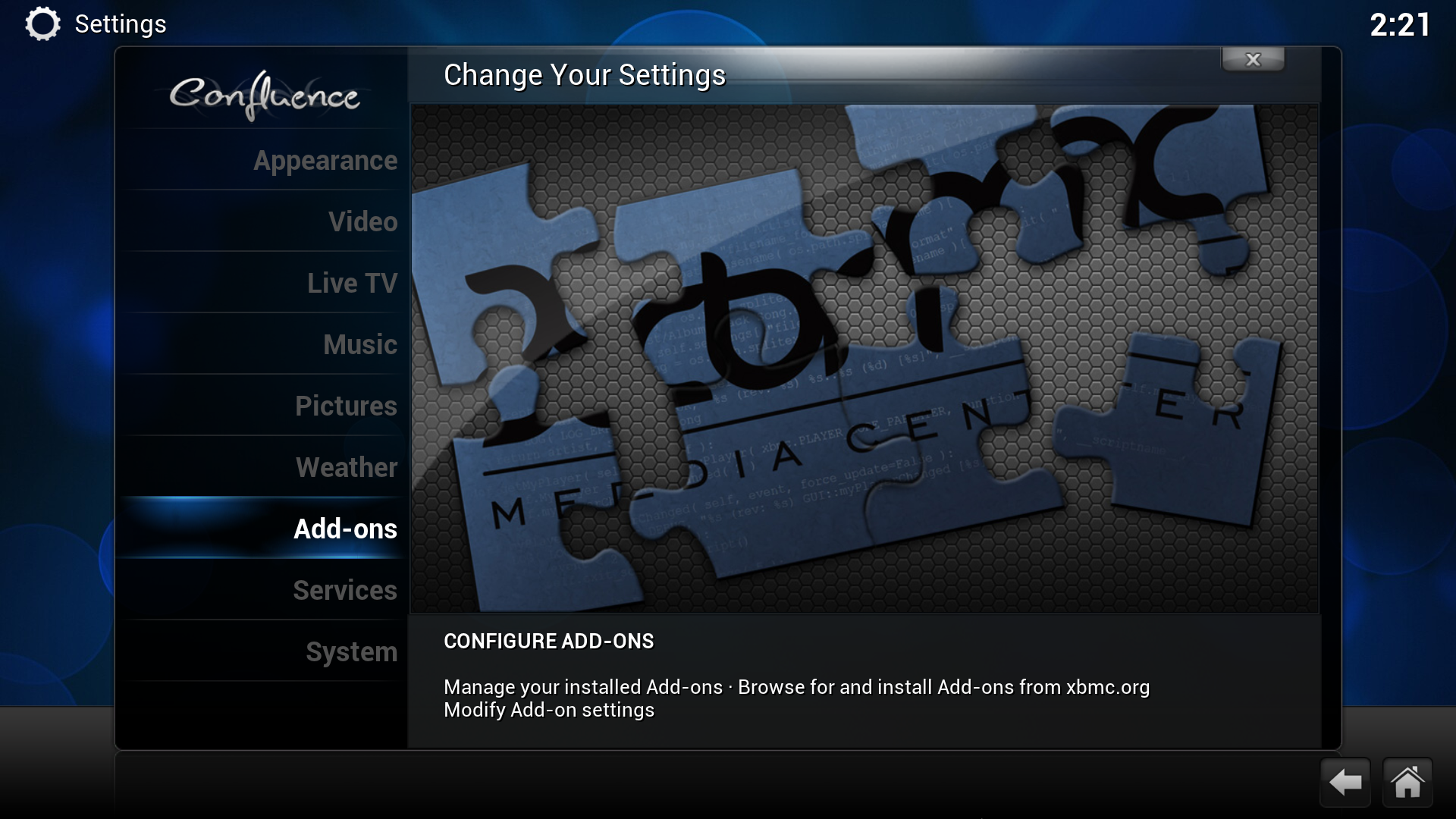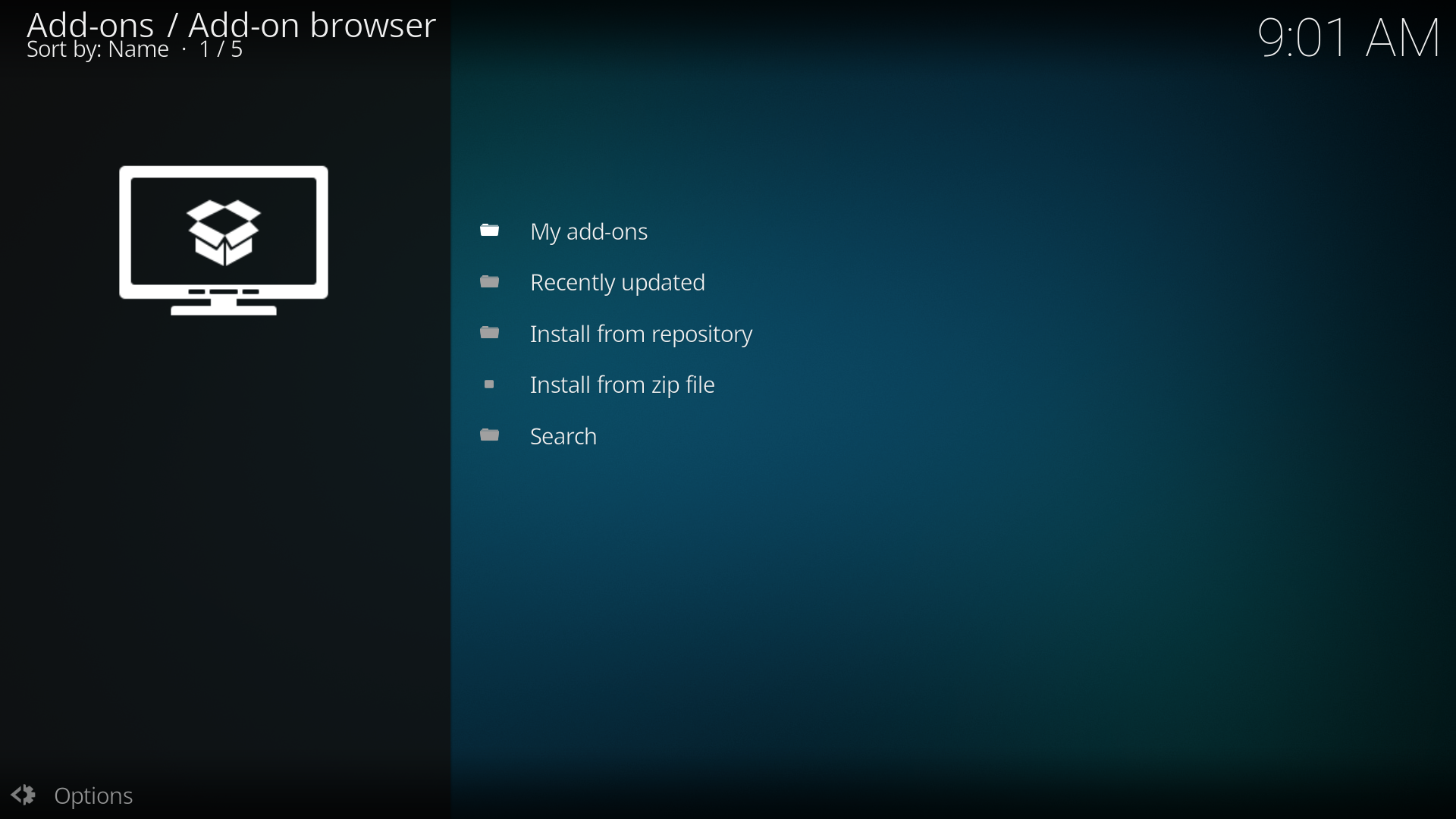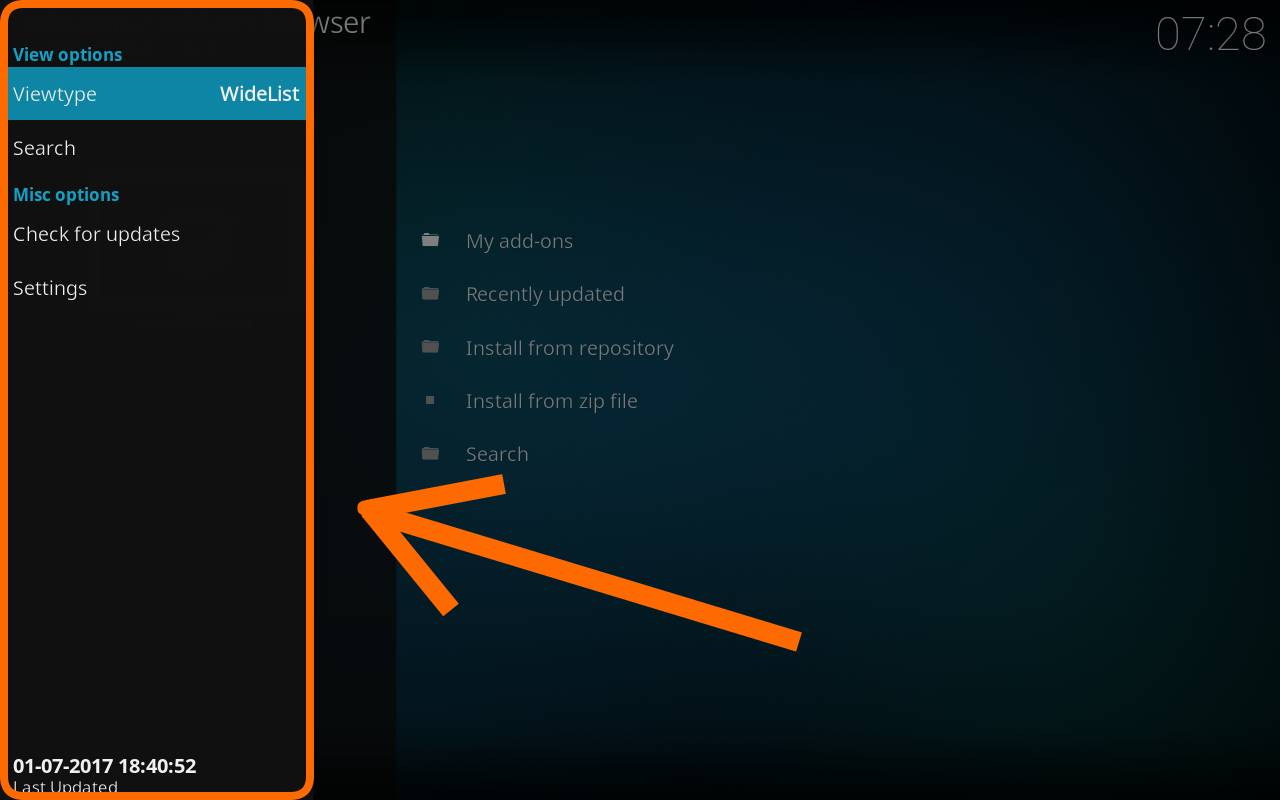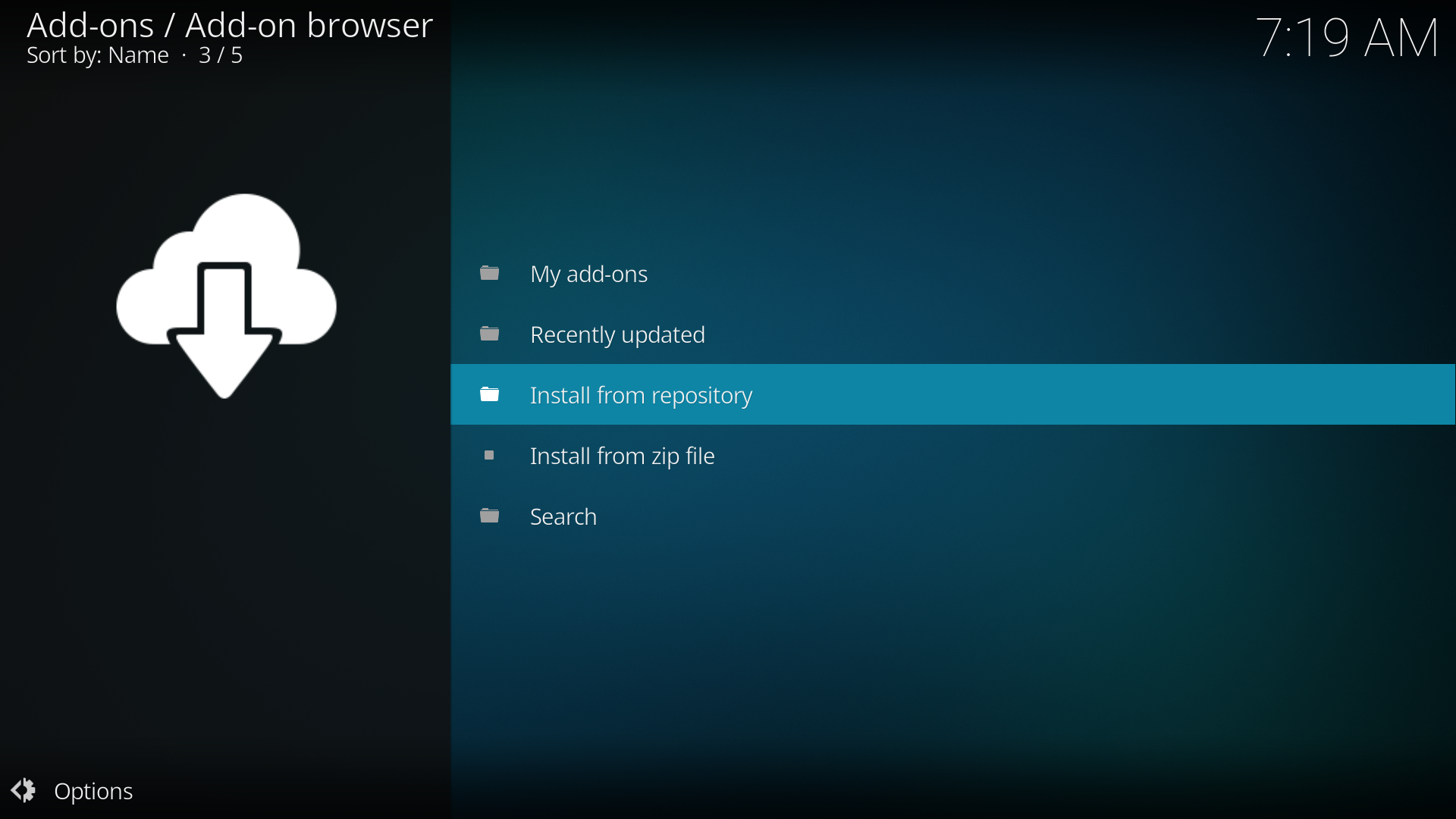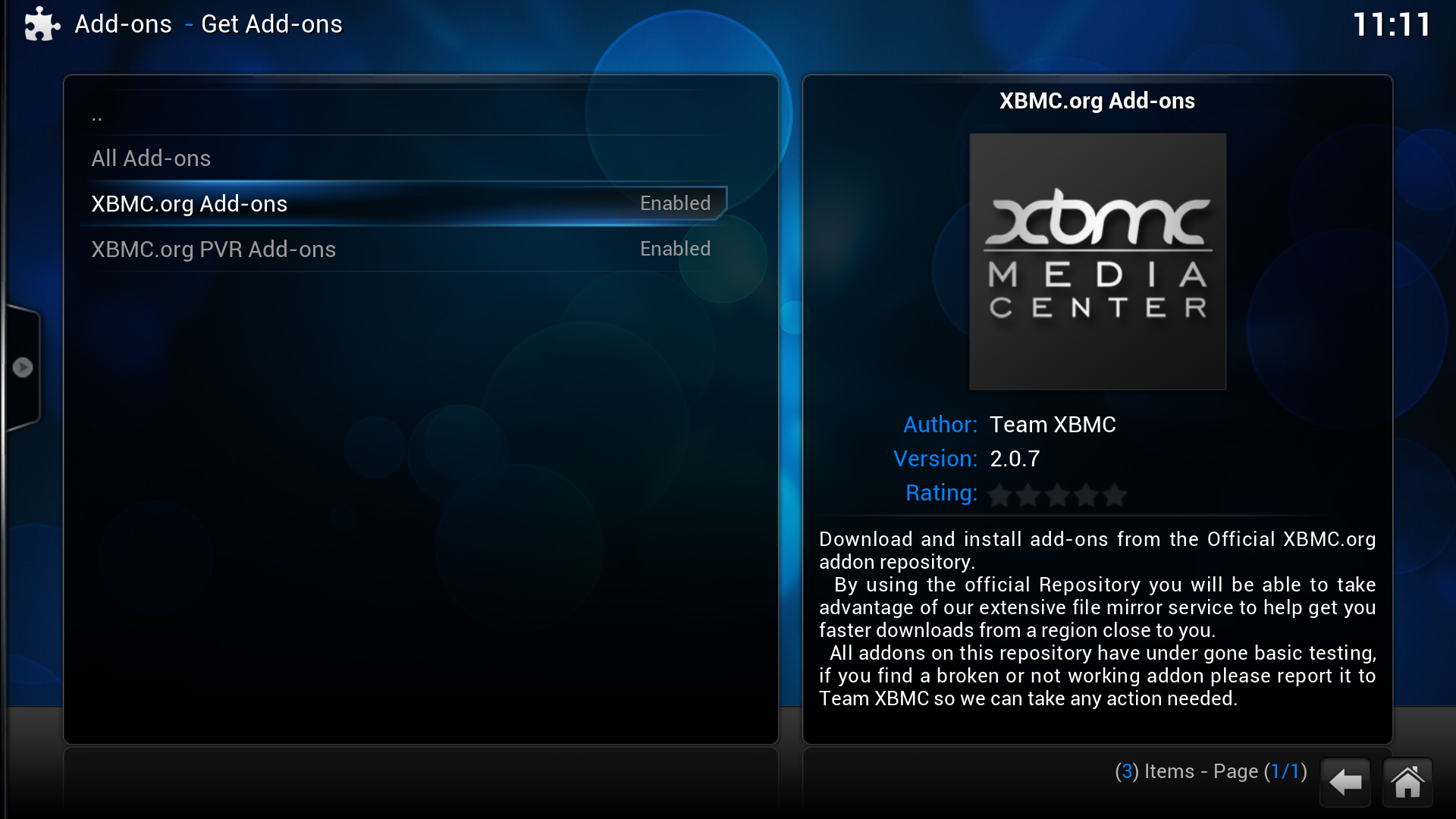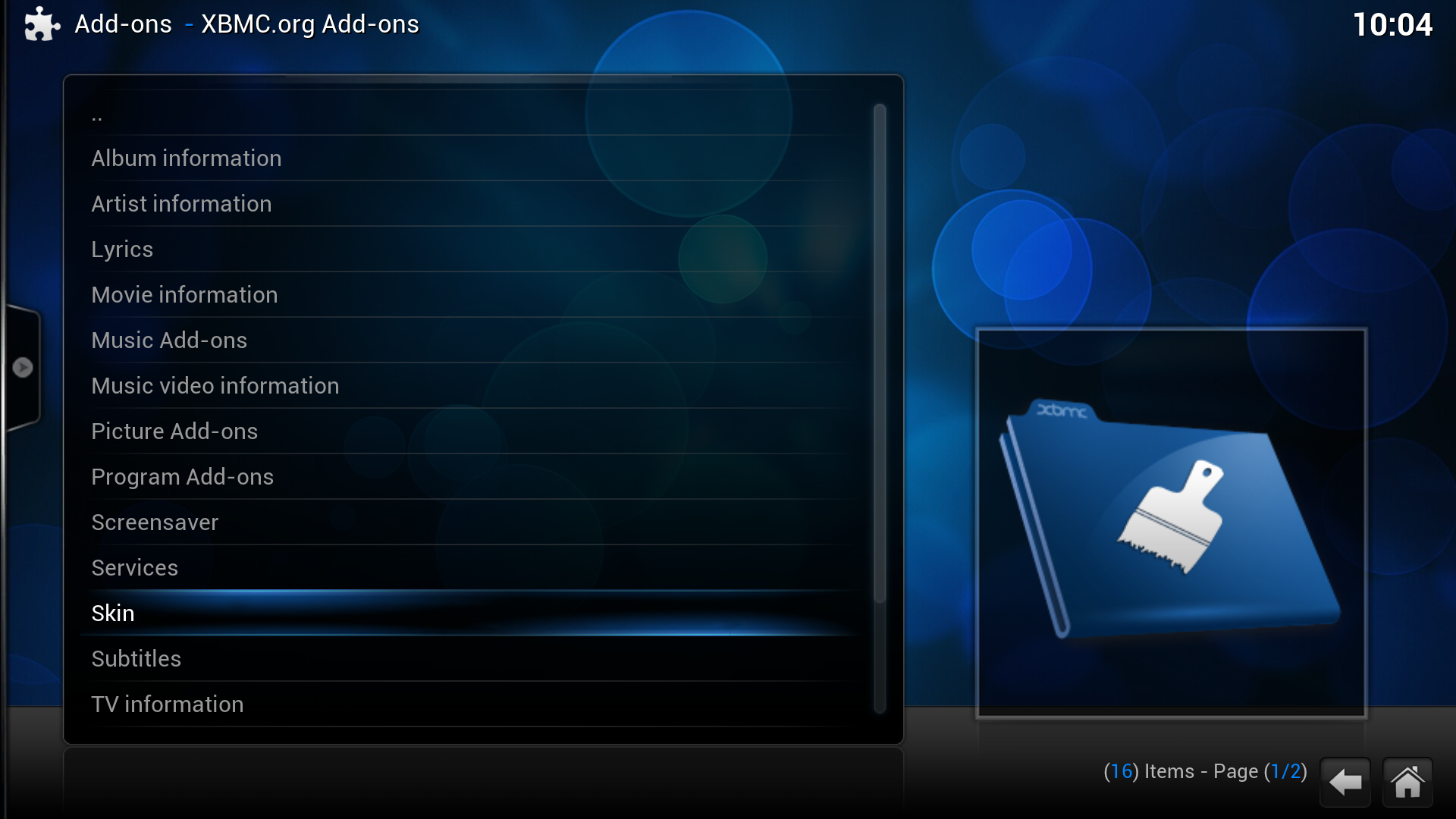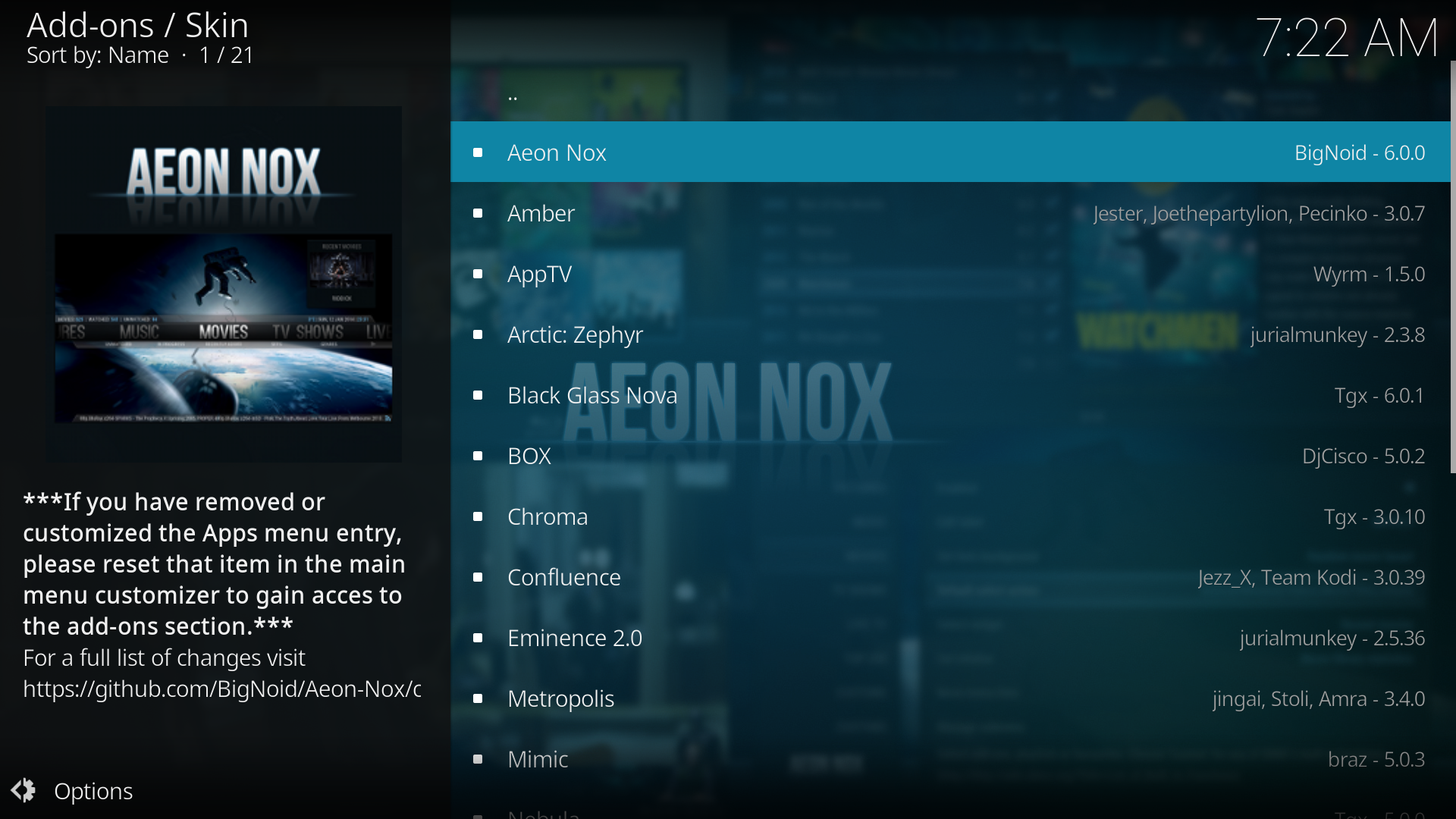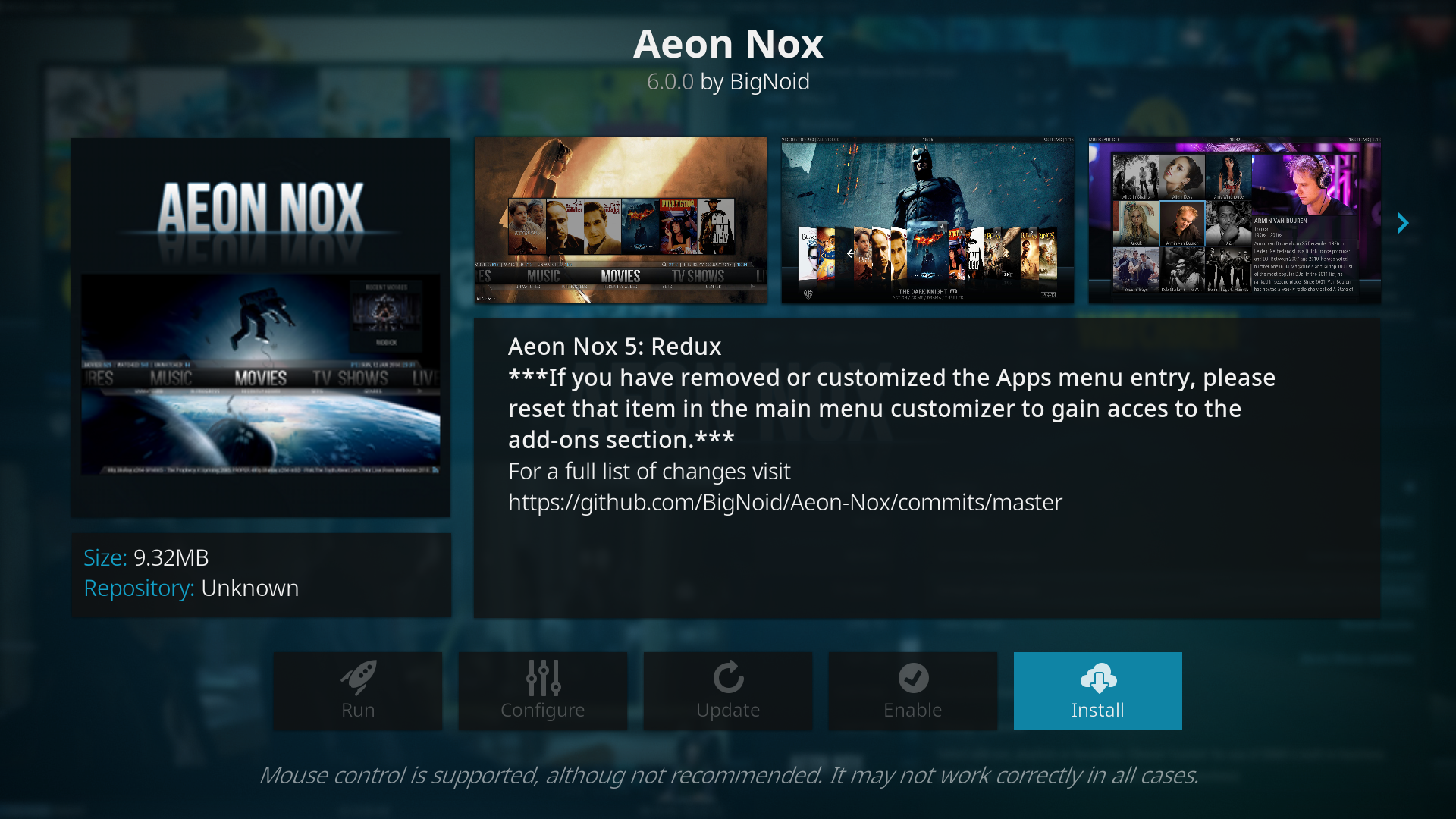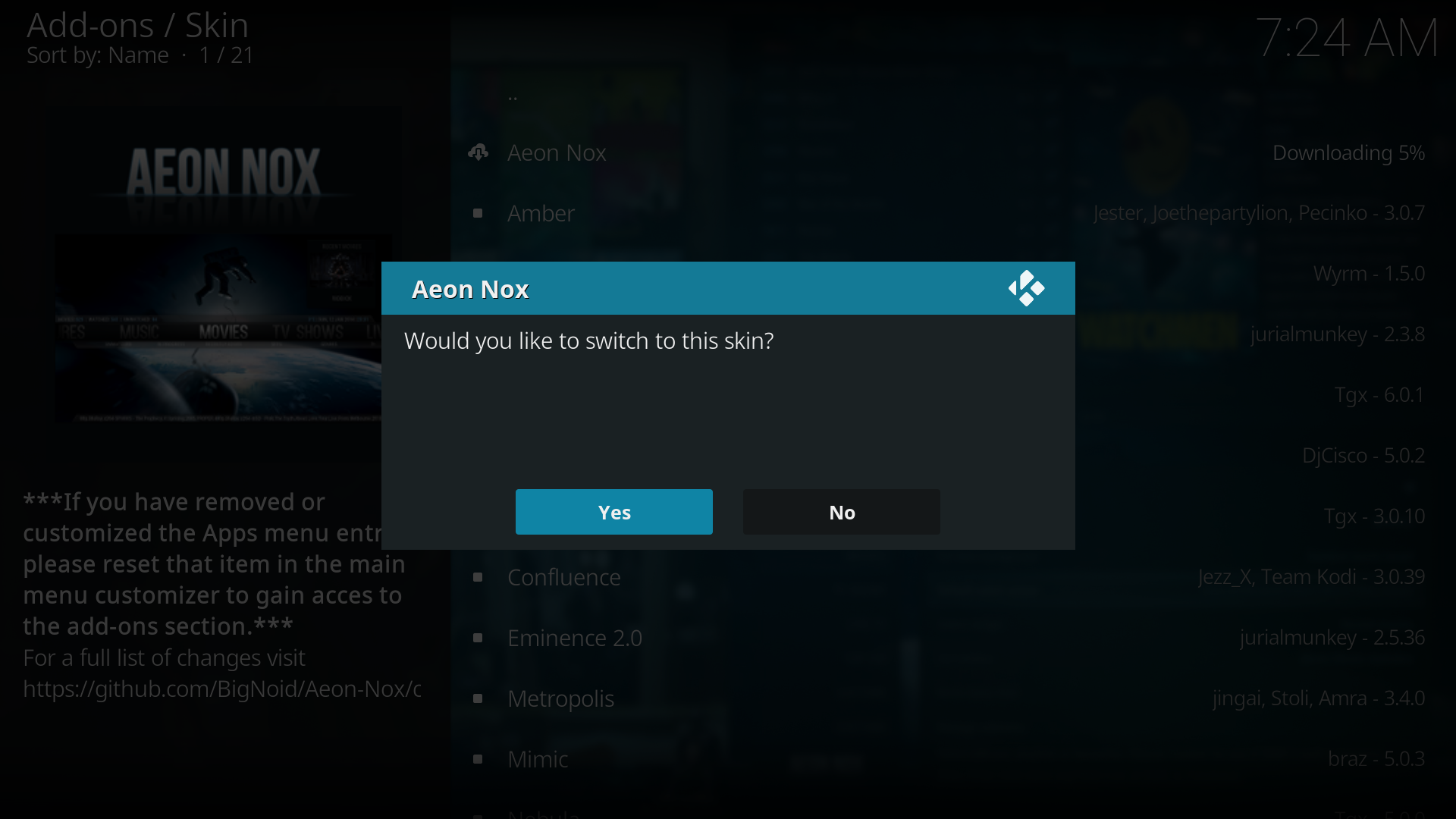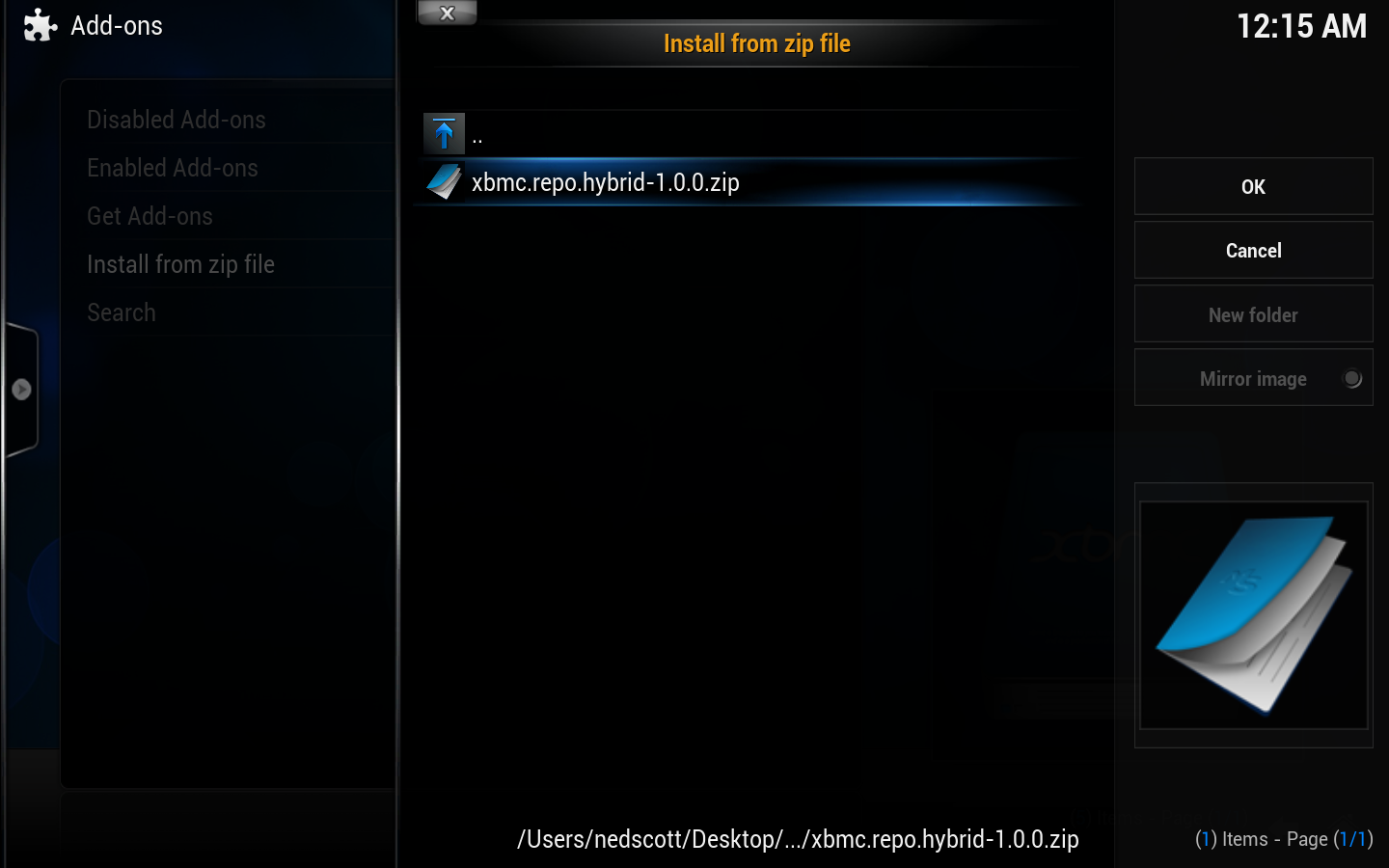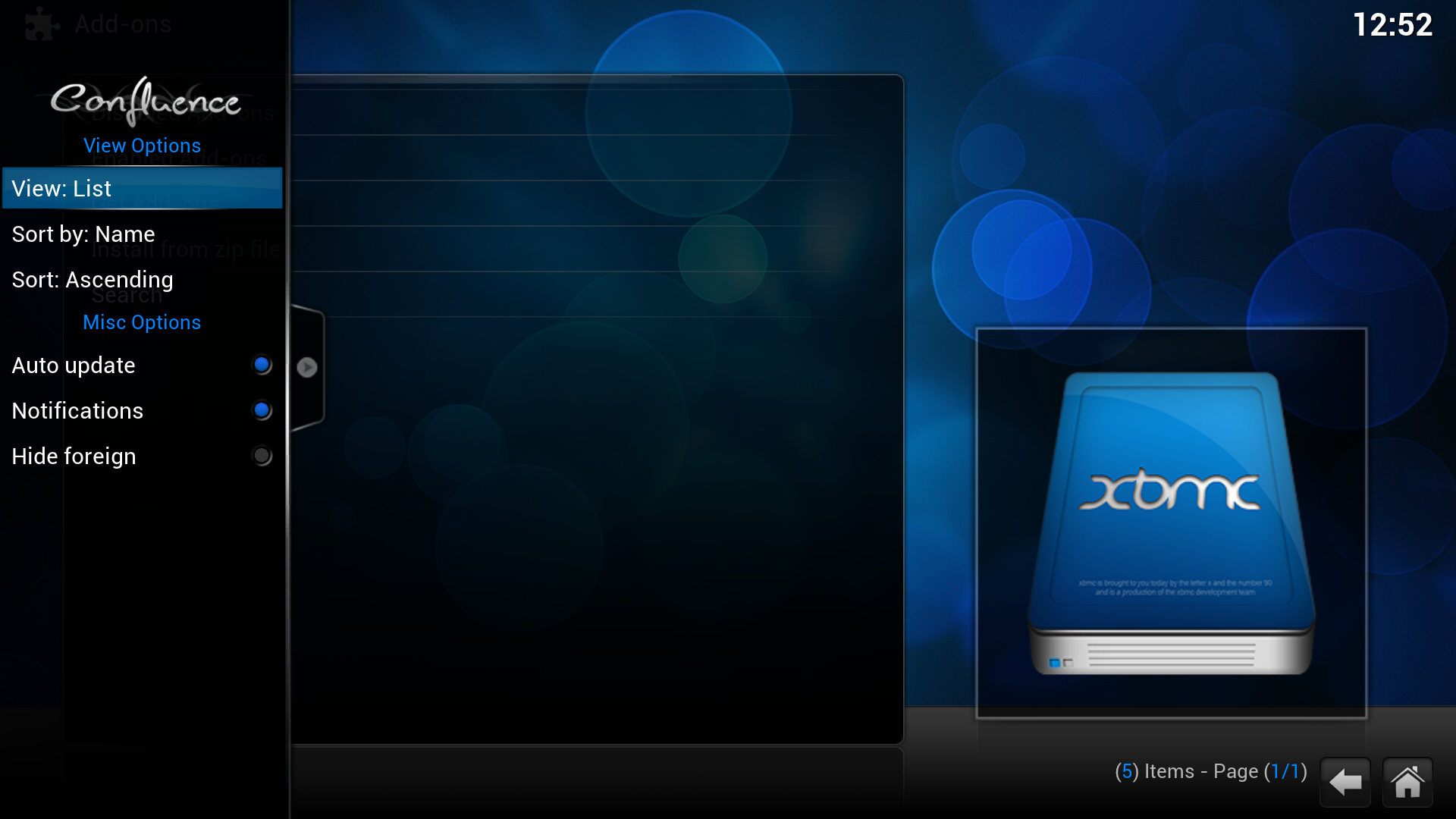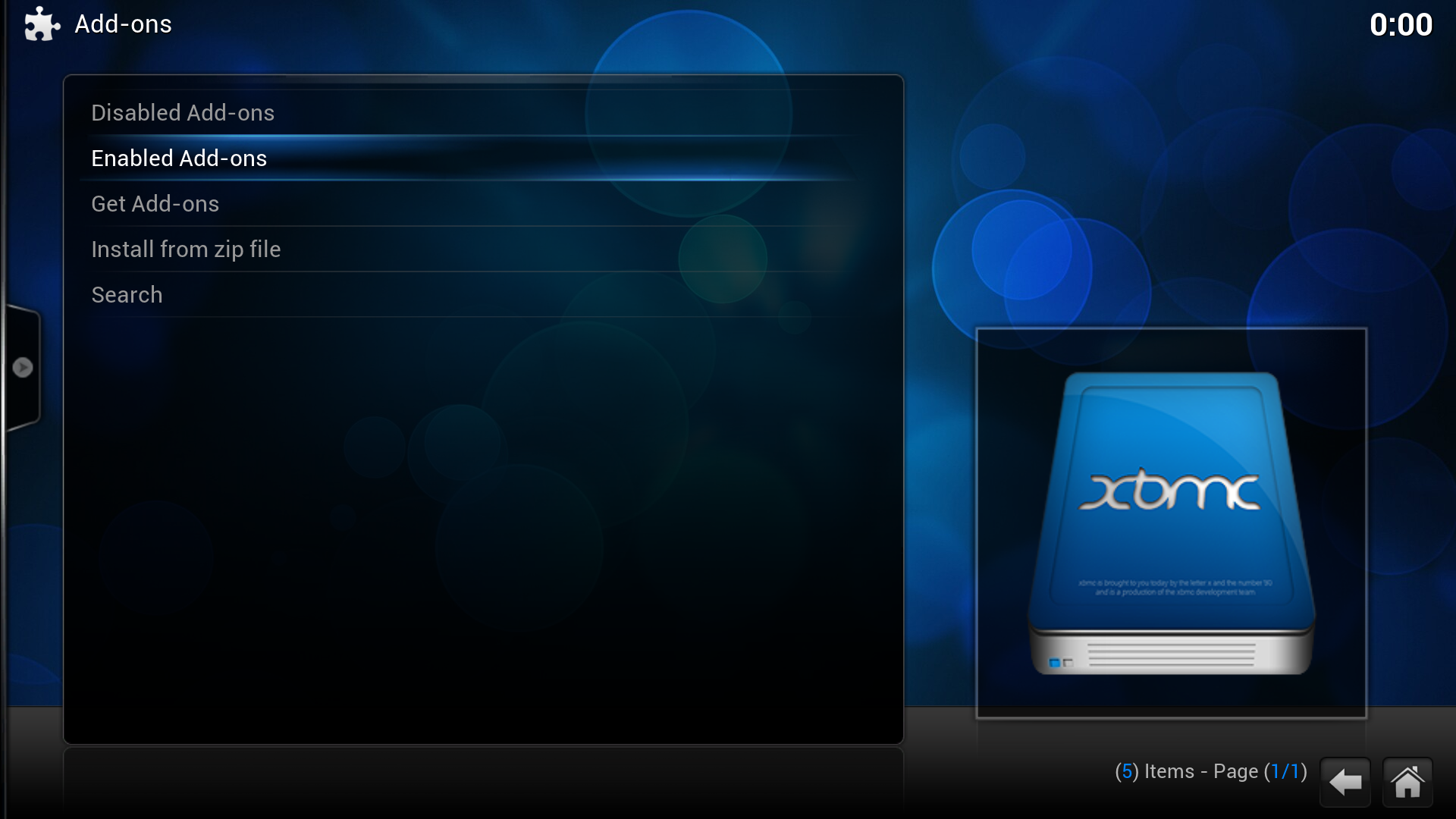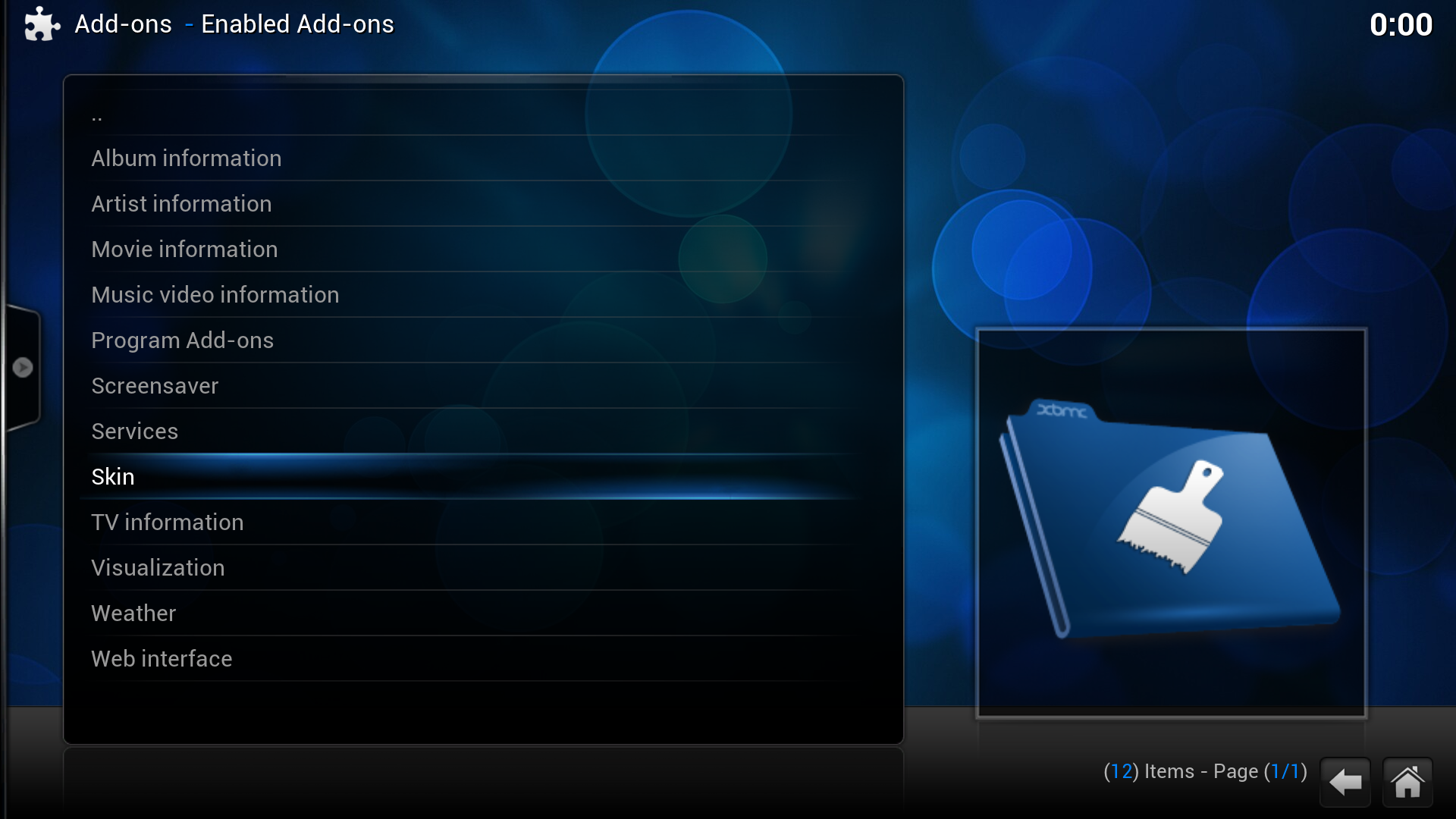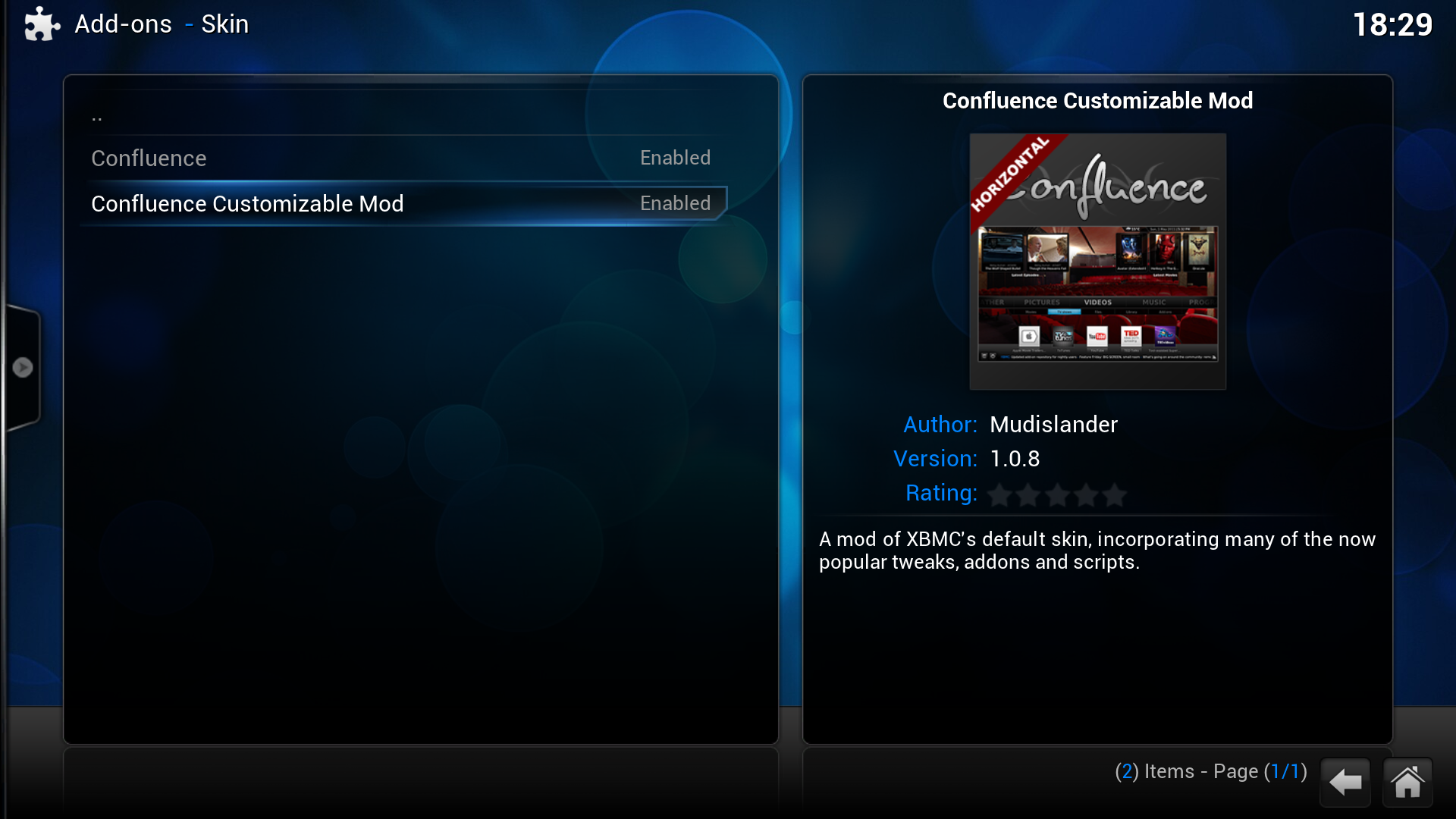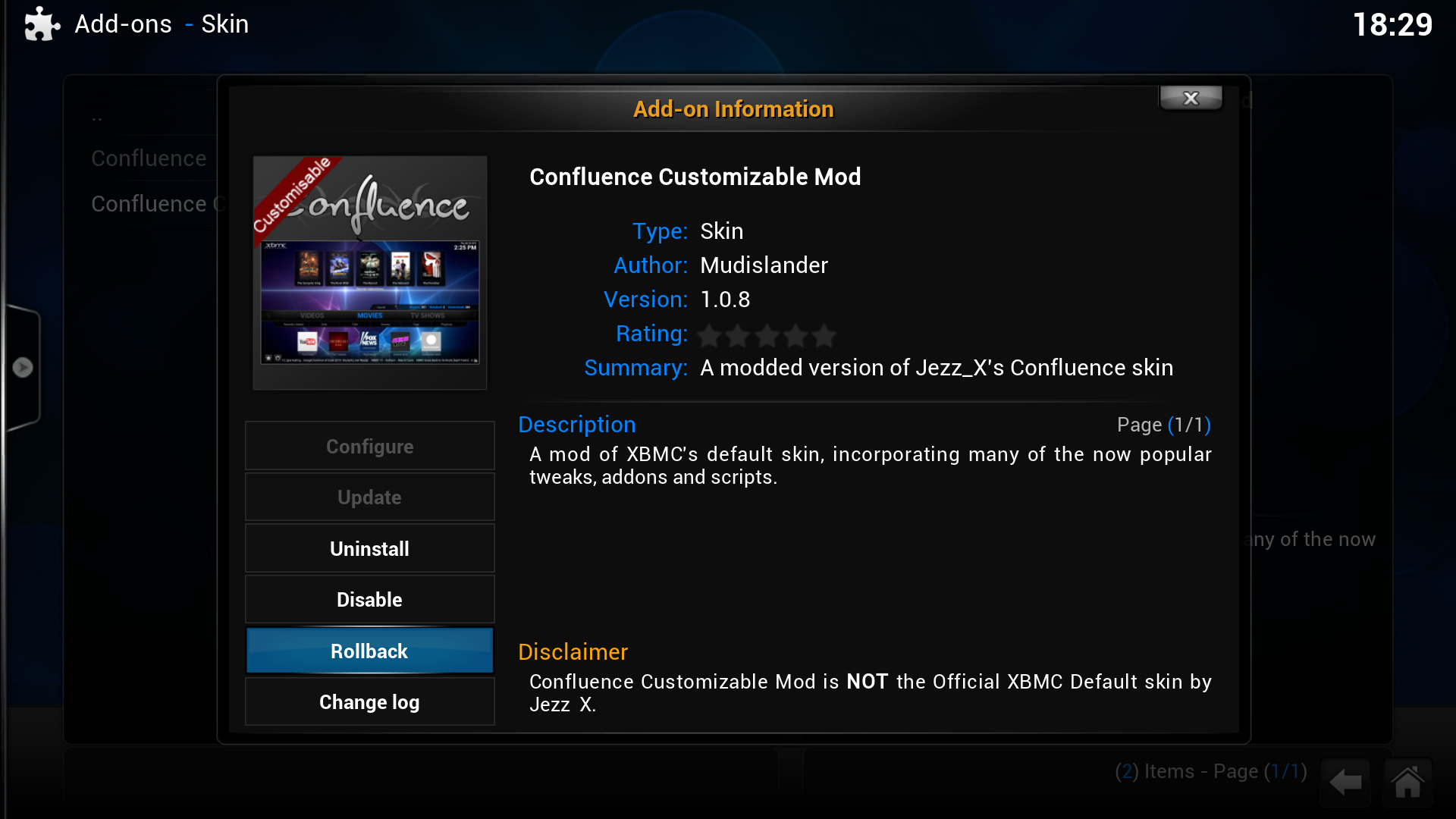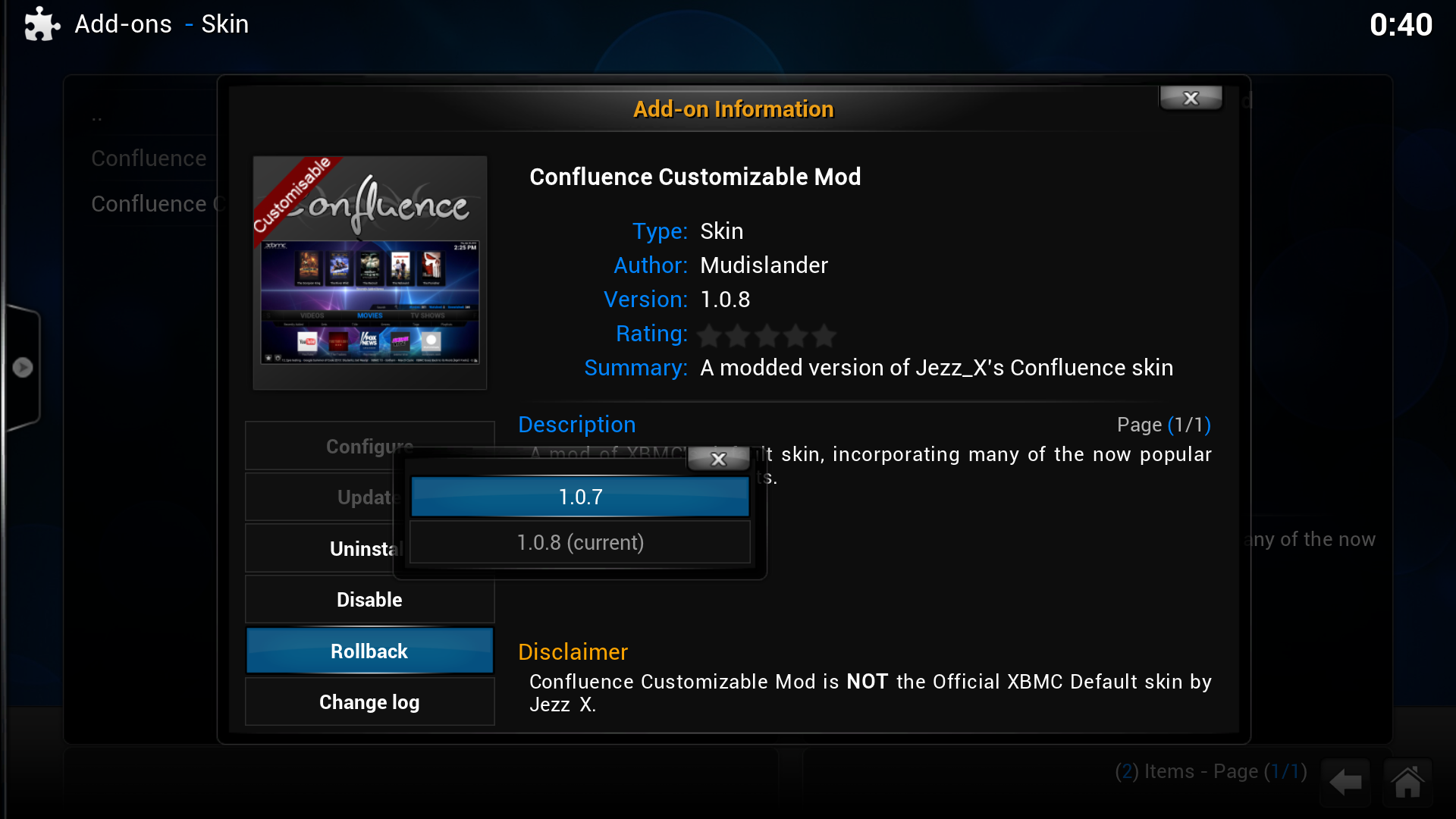Add-on manager: Difference between revisions
| Line 35: | Line 35: | ||
=== Lefthand sidebar menu === | |||
[[File:add-on manager sidebar menu.png|500px]] | |||
:The manual "check for new updates", and the date of the last add-on check, is now on the lefthand sidebar menu. The option for "force update" on add-on repos has been removed as checking for new updates will have the same effect. | :The manual "check for new updates", and the date of the last add-on check, is now on the lefthand sidebar menu. The option for "force update" on add-on repos has been removed as checking for new updates will have the same effect. | ||
Revision as of 00:07, 30 July 2015
The Add-on manager's purpose is to manage the various add-ons to the Kodi application. It can be browsed like any other section and the various installed/uninstalled, enabled/disabled add-ons. In the Add-on manager you can also change the settings for auto update, notifications and foreign filter by bringing up the slide in submenu (press left ← to show/hide). The Add-on manager is not where you go to run add-ons, but only to install and configure them.
How to access the Add-on manager
From the home screen, go to
- System -> Add-ons
Add-on manager options
- My add-ons
- All installed add-ons, disabled or not, can be found in "My add-ons". This includes both a per-category listing as well as a single unified list of all installed add-ons.
- Available updates
- When an update to an add-on is available it will show up here. By default, add-ons are set to update automatically, so this should normally be empty unless you have changed your preferences to prevent automatic update installs.
- Install from repository
- allows you to install new add-ons from the installed repositories. Kodi.tv add-on repository is the official add-on repository that is already included in Kodi, but other add-on repository sources can also be installed. (see How to install additional add-on repositories for more info)
- Install from ZIP file
- allows the installation of an add-on or repository from a ZIP file, either from the hard drive or LAN.
- Search
- allows you to search add-ons in the installed repositories and your installed add-ons.
- System
- Allows users to see which add-ons are running or used by another add-on. It contains the following sub-categories:
- Dependancies - Various module/lib add-ons that are required for other add-ons to run. Previously, many of these add-ons were not listed in the GUI at all, which prevented the ability to use rollback or see change logs.
- Orphaned dependancies - Module/lib add-ons that are safe to uninstall as they are no longer needed. For example, some module add-ons might be installed to support a new skin add-on, but are no longer needed if that skin add-on is later uninstalled.
- Running - What add-ons are currently running all the time (such as services), which helps find add-ons that might be causing slow-downs. Please note that some add-ons are designed to run all the time, and most shouldn't cause any issue.
- The manual "check for new updates", and the date of the last add-on check, is now on the lefthand sidebar menu. The option for "force update" on add-on repos has been removed as checking for new updates will have the same effect.
How to install add-ons from a repository
For this example a skin is being installed, the same method is used for other add-ons.
- Select Install from repository -> Select the repository (if only one repository is installed, then you will automatically go into that repo) -> Select the add-on category -> Select the add-on -> Select Install
When the add-on has finished downloading Kodi will enable it and depending on the add-on ask if you want to start using it. Add-ons will then appear in their appropriate section (e.g. skins in the appearance section of settings, movie scrapers in the options of scrapers when adding a new movie source)
How to install from a ZIP file
In this example the hybrid repository is being installed, but the method is the same for add-ons. First download the ZIP file, then:
Settings → Add-ons → Install from zip file -> Navigate to the ZIP file
Repositories
Repositories are storage locations from where add-ons can be retrieved from. Kodi comes with two official add-on repositories installed by default, Kodi Add-on repository and Kodi PVR Add-on repository. However others can be added.
To install a new repository you must first find the ZIP file to install the repository, a list of 3rd party add-on repositories is semi-maintained on the wiki - other repositories may exist. Then follow the instructions at How to install from a ZIP file.
Updating
To manually update add-ons or change update settings, from the home screen go to the add-on manager and bring up the lefthand sidebar menu.
By default Auto update is enabled and all installed add-ons will be automatically updated when new versions are available from the repositories.
If you want to enable/disable auto-updates, while in the add-on manager bring up the slide in submenu (press right → to show/hide) and enable/disable Auto update. You can still select to be notified of updates being available, allowing you to choose to apply the updates or not on a per-add-on basis, or not check for updates at all.
If auto update is turned off you should see a folder in the add-on manager that says Available updates, where you can go in and one-by-one and update add-ons.
Installing an add-on from a ZIP file can lead to it not having a repository associated with it. Automatic or manual (using Available Updates folder) update will then not be available. You can of course manually update the add-on by downloading a ZIP file with the new version. If you later install the associated repository the add-on will be able to get automatically or manually updated.
Update/install notifications, which can be toggled on/off in the submenu, will show up in the right bottom corner and will notify you that:
- a new version of an add-on is available, if you have Auto update disabled.
- an add-on has been updated, if you have Auto update enabled.
- an add-on has been enabled (only when installing a new add-on or when doing rollbacks).
- an installation has failed.
Rollback
Rollback is a function to reinstall a previous version of an add-on. The reason to do this can be that you don't like the new version (e.g changed features) or that the new version introduced a bug.
Rollback is only available if you've had a previous version installed before getting the add-on manually or automatically updated. I.e. if you install a new add-on only the latest version will be installed, thus you can't rollback to any other version.
If you rollback from version B to A and version C is added to its repository the add-on will automatically get updated (if you have Auto update enabled) to version C and you'll have to rollback again to version A. To stop this from happening disable Auto update or uninstall the associated repository. The latter is not always practical or even possible, e.g. the official repositories.
To do a rollback, from the home screen go to the Add-on manager
- System -> Add-ons
then
- Select Enabled Add-ons -> Select the category -> Select the add-on -> Select Rollback -> Select a previous version to reinstall
See also
Development:
